Drilling wells - an effective method of water extraction
Modern cottage villages, as a rule, do not have a connection to the central water supply system. And before the owners of such cottages or country houses there is a question about how to provide water for their dwelling. This issue can be solved by drilling wells and bore-holes or building your own well.
The well is the most economical solution to the problem, but it is less convenient in everyday life. Some give preference to a service such as drilling lateral wells, in the event that the site already has an old well.
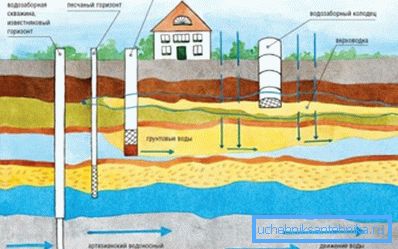
But they often refuse to drill because the price of this service is very high. If the necessary water well should have a small depth, then the process of its creation may well be realized on its own.
Choosing a place
First you need to determine the place in which your well will be located.

Due to the fact that work on the exploration of layers of soil are quite expensive, drilling of wells is often carried out "for good luck".
For this reason, when choosing a place, many of the site owners rely only on the rationality of the location of the recess:
- If you plan to organize water supply in the house, then drilling should be done closer to the house;
- The well should be located in such a way that it does not impede the movement of people or vehicles along the section;
- The place should be chosen as close as possible to objects in need of water, which may be bath, swimming pool, greenhouse, etc .;
- There must be at least 20 m between the sewage system and the drilling site;
- Once the location has been selected, it should be cleared by removing all items that may interfere with the drilling process.

But if drilling is planned in the vicinity of buildings that may suffer, it would not be superfluous to use such a service as telemetric tracking of drilling wells. Such drilling will be quite expensive, but safe.
Instruments
How to start drilling? The right decision would be to prepare all the necessary tools before starting the work, so that in the process of creating the recess everything was at hand.
Those who have decided to cut a hole in the well with their own hands should stock up on the following tools:
- Drilling spoon - The tool used for work in sandy or clay soils;
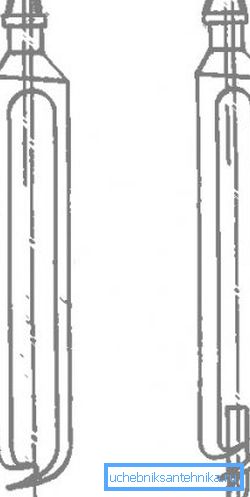
- Coil - tool used for drilling in clay and loamy soils, in which also a small amount of gravel is present;
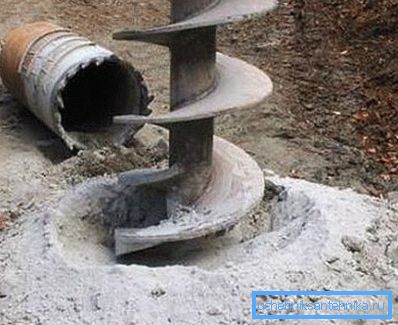
- Chisels may be needed when applying shock methods;

- Bailer - it will be necessary in order to extract layers of soil when drilling wells in loose soils by percussion methods;

- The type of drill is selected based on the type of soil. But the main tool in the process is by all means the auger, which has lengthening lugs. In the role of such a screw can perfectly perform the most common fishing auger. A pipe with a diameter of 25 mm is used as the knees of such a screw;
Tip: In order to make such a fishing auger a more effective tool, reinforcing tools are welded onto it, which are made from files pre-sharpened by a grinder.
- You will also need a hose, pump, barrel, shovel and trolley;
- Such equipment will be necessary for the well., like: pump, hydroaccumulator, automation system and filters.
Well drilling technology
After the place has been chosen and all the necessary tools have been prepared, it’s high time to begin the installation of the recess. At least two people should be involved in this process, but it is desirable that there be more assistants, because the process is very time consuming.
It is important to understand that high-quality work will be a guarantee that neither thawed or ground water will destroy the water well.
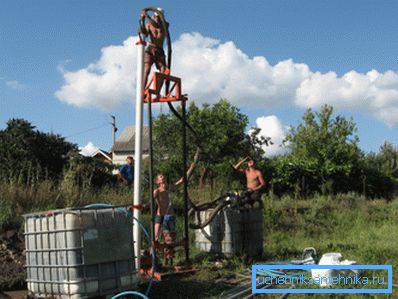
First you need to manually dig a recess of at least 50 cm, which will continue to be guides.
Tip: Even before the start of work, purchase several casing pipes that will form the barrel in the process, starting with the very first meter passed. It is advisable to purchase plastic casing with a threaded connection. The diameter must necessarily exceed the diameter of the drill itself.
The drill is lowered into the prepared recess and the screwing process begins. Layers of the earth when drilling a well should be removed after a few turns of the drill.
Manual drilling instruction provides for the addition of an additional extension rod as soon as the tool is screwed into the ground for its entire length. As the depth of the well increases, the pipes are lowered into it, which reinforce the walls and block the possible entry of the water pipe into the well.
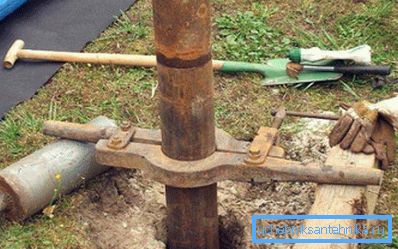
Tip: The process may deviate from the vertical axis, as evidenced by the impact of the drill on the casing structure. It can be leveled using wedges driven between casing and ground.
Pipes between them must be carefully connected. If there is no thread at the end of the pipe, then fixing should be done by soldering. The next casing should be started when the surface remains about 15 cm past. A drill in the recess is introduced through a new pipe.
Determine the depth
Having decided to drill wells in your own area, you first of all need to understand the quality of water you need and for what purposes you plan to use it. If water is necessary for technical needs, then no special requirements are imposed on its quality.
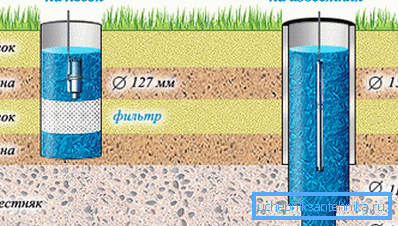
But if water is needed for drinking, the process involves the creation of a deeper well, it may even be necessary to take core samples when drilling wells for its analysis. Samples of the water found are also taken for analysis, since only the sanitary-epidemiological service will be able to determine whether this water is suitable for food use.
Well Construction
In order for the house to have water, the well must not only be drilled, but also equipped. The development of the well after drilling is directly related to the installation of filters and a pump in it, which you can easily purchase at any hardware store.
Choosing a pump
Modern pumps for wells are of the following types:
- The manual pump (allows to get water in the conditions of lack of electricity);
- Vibrating pump (capable of delivering water from a depth of 50 m., Perfectly suited for use in sandy soils);
- Submersible pump (able to pump out water from a depth of 300m.);
- Centrifugal submersible pump (silent pump designed to extract water from high performance wells).
When choosing a pump, you should rely on the design and diameter of your well, the quality of water, the distance from the mouth to the location of the water intake and the approximate amount of water needed per hour.
Water is certainly needed in every home and in the absence of a central water supply system, each owner solves this problem on his own.
Directional drilling of wells, construction of a well, installation of a well with their own hands are all methods by which the problem of the lack of water in a suburban area is solved. Whatever method you choose, remember that water should be clean, devoid of impurities, because your health and the health of your loved ones depends on it.

The video in this article will help you learn more about the technology of drilling wells using various methods.